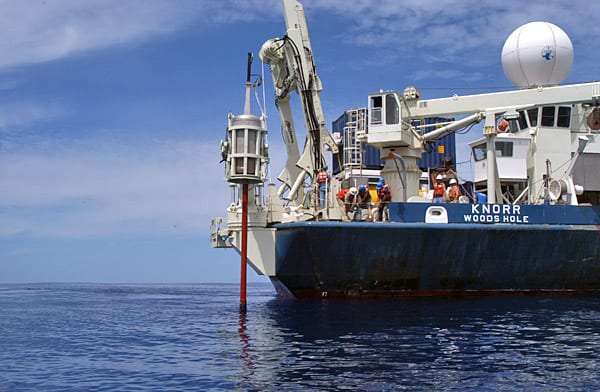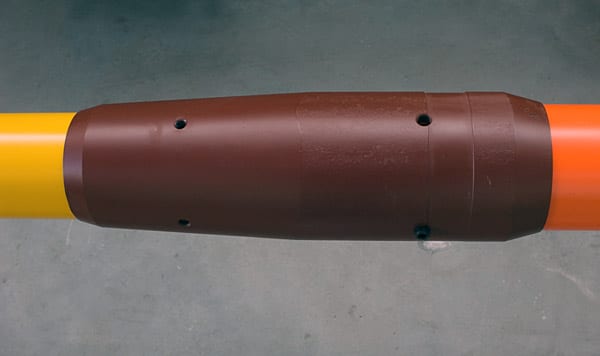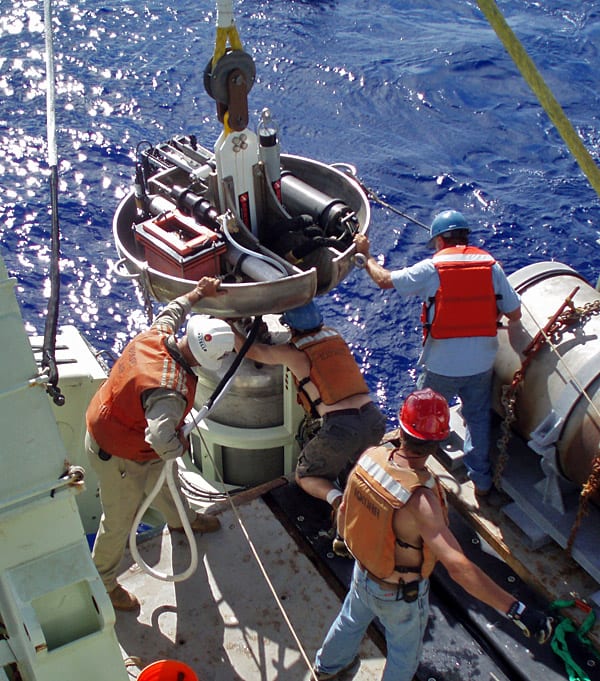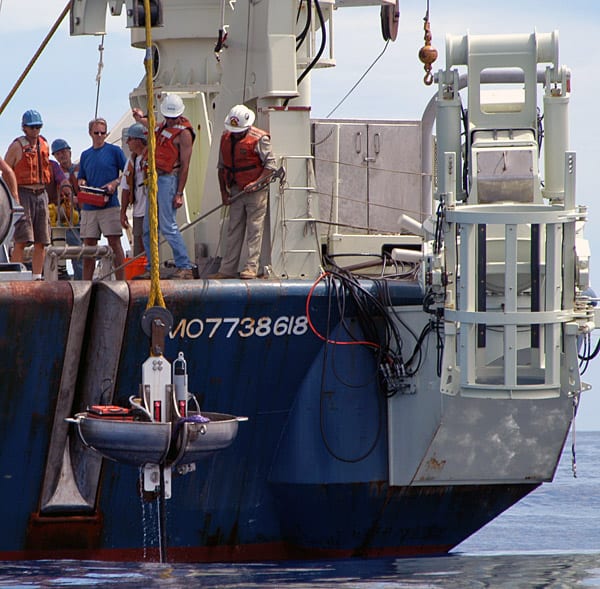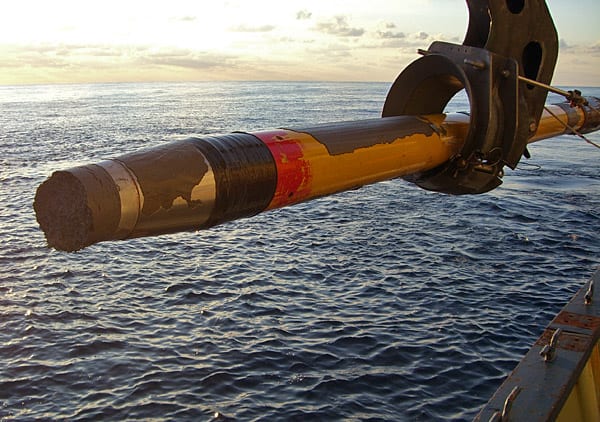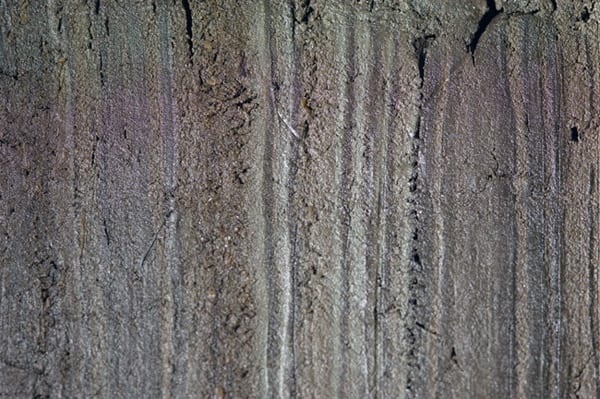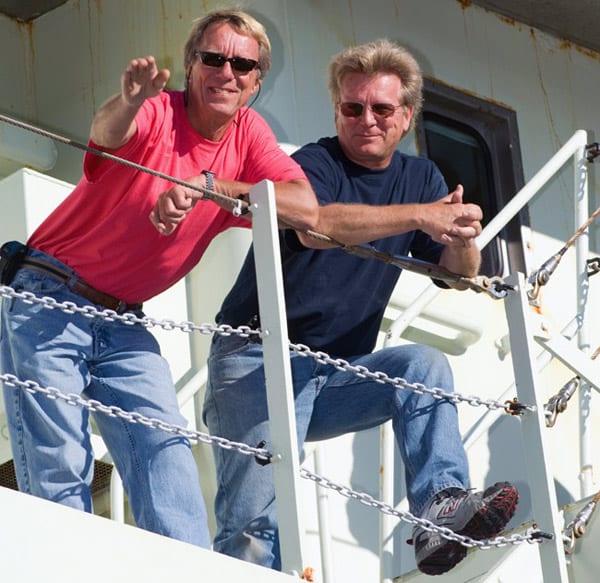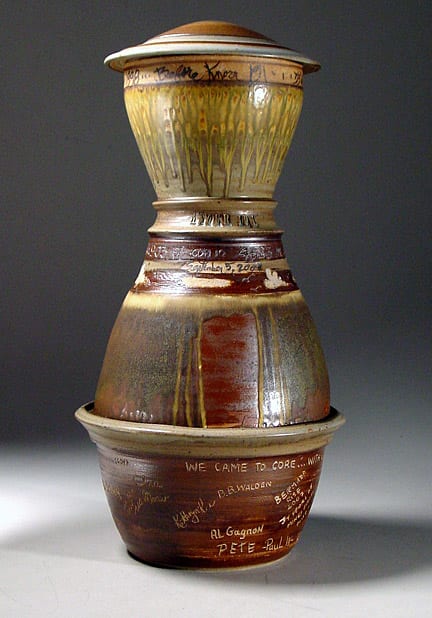
New System to Take Long Seafloor Cores Is Ready to Go
Tested at sea, the 'Long Corer' restores U.S. capacity to extract cores up to 45 meters (150 feet) long.
Over five years, engineers had designed, built, and tested components for a new, one-of-a-kind system to extend the length of sediment samples cored from the sea floor. In September, they took it to sea to find out if the new coring system installed on the research vessel Knorr can accomplish the daunting feat of pulling up cores weighing up to 30,000 pounds and measuring up to 45 meters (150 feet).
That nearly doubles the coring capacity of the United States research fleet, which ranged from 20 to 25 meters (60 to 80 feet). The longer the cores, the deeper they go, collecting older sediments that record past conditions and events in the planet’s oceans and climate.
In tests off Bermuda and New Jersey, the long-core system retrieved eight cores, ranging from 25 to 38 meters (85 to 125 feet), said James Broda, a WHOI research specialist who guided development of several specialized components for the long core system. These included a winch and new synthetic ropes strong enough to haul up long cores, and hydraulic systems and davits to launch and recover the corer.
“All the many components of the ‘Long Corer’ were finally in one place on Knorr, and as a complete system, it started on the first pull,” he said. “The winch performed as designed, the starboard davits danced in sync to launch and recover the core, and all the new hydraulic systems worked better than we dared expect they would. It was a blast to see it all come together.”
Adding to researchers’ excitement was seeing the quality of the cores collected.
Historically, heavy corers stretch the long wirelines on which they are lowered. When the corer penetrates the seabed, the wirelines recoil elastically, jerking an internal piston within the corer. That erratic piston motion stretches and distorts the stratified sediment layers that provide a chronological record of past conditions and events in the planet’s oceans and climate.
“The long core system employs an exceptionally strong synthetic rope that does not stretch even at full ocean depths of more than 15,000 feet with a heavy load in place,” Broda said.
None of the cores collected during sea trials, including two 38-meter cores, showed evidence of stretching, said geologist Bill Curry, director of the Ocean and Climate Change Institute at WHOI.
Slideshow
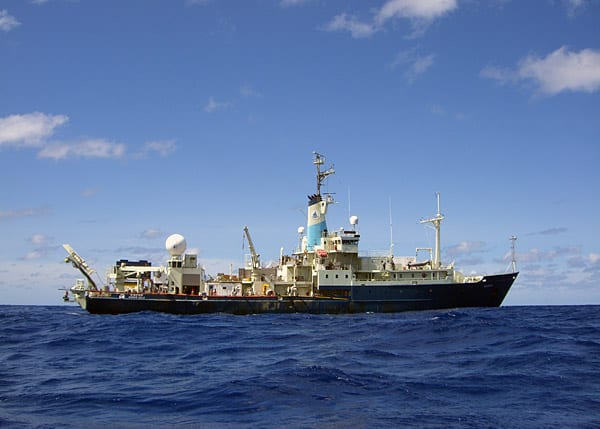
Slideshow
 Scientists and engineers headed out aboard the research vessel Knorr in September 2007 to try the new long core system at sea for the first time. (Woods Hole Oceanographic Institution)
Scientists and engineers headed out aboard the research vessel Knorr in September 2007 to try the new long core system at sea for the first time. (Woods Hole Oceanographic Institution)- The core barrel, measuring 45 meters (150 feet) long, is stowed on brackets along the ship's starboard side. Three computer-controlled davits then lift the core off the brackets and move it outboard and clear of the ship's hull. (Woods Hole Oceanographic Institution)
- The long corer is lowered to vertical by the davits while held captive by a pivoting grapple. The grapple then rotates the corer to the center of the ship's stern (rear), where it is lowered to the seafloor. (Woods Hole Oceanographic Institution)
- The core barrel is made of individual high-strength steel sections (yellow and orange) joined by couplings (burgundy). To resist bending, barrel sections at the top have the thickest walls (1 1/8 inches), tapering down to 3/8 of an inch at the bottom. (Tom Kleindinst, Woods Hole Oceanographic Institution)
- Engineers blended two types of synthetic rope to make a 4.3-mile-long, 2-inch-diameter line that has a breaking strength of 355,000 pounds. Its superior strength minimizes elongation at full ocean depths, allowing cores to be recovered without disturbance to their stratigraphy (the layering of the sediments). (Tom Kleindinst, Woods Hole Oceanographic Institution)
- A large, disk-shaped acoustic modem provides two-way communications. It relays undersea data from the corer to the ship (such as how far the corer is from the seafloor). It also receives and executes commands from the ship (including when to release the corer to plunge into the seafloor to collect sediment). (Woods Hole Oceanographic Institution)
- At the first phase of recovery, after the core system has been winched back from the seafloor, the acoustic release module returns first, now separated from the long core. The module must be recovered and secured on deck before the long core surfaces. (Woods Hole Oceanographic Institution)
- The core cutter, with a small amount of "extra-recovered" sediment protruding from the sharp cutting edge, surfaces during the last stage of retrieval of the long core system. (Woods Hole Oceanographic Institution)
- Cores are split in half and taken back to the WHOI Seafloor Sediment Lab, where scientists such as Candace Major analyze them to reconstruct a history of past ocean and climate conditions on Earth. (Tom Kleindinst, Woods Hole Oceanographic Institution)
- Sediments contain evidence of past ocean and climate conditions. They accumulate on the seafloor in layers, offering a chronology of when the conditions occurred. (Tom Kleindinst, Woods Hole Oceanographic Institution)
- WHOI research special Jim Broda (left) and Bill Curry, director of the WHOI Ocean and Climate Institute, return to Woods Hole after the successful sea trials aboard Knorr. The two spearheaded development of the new long corer system. (Tom Kleindinst, Woods Hole Oceanographic Institution)
- To celebrate the testing of the new long core system, Woods Hole artist Joan Lederman created a urn that was "signed" by cruise participants onboard Knorr and then fired. Lederman is known for her singular pottery, which is glazed with seafloor "muds," given to her by WHOI seagoers. She donated the urn to WHOI. "I wanted to salute those who calculate risks, fund experiments, and put their skills on the line, apply all intelligence to implementation, and then accept the outcomes," she said. (Joan Lederman)


